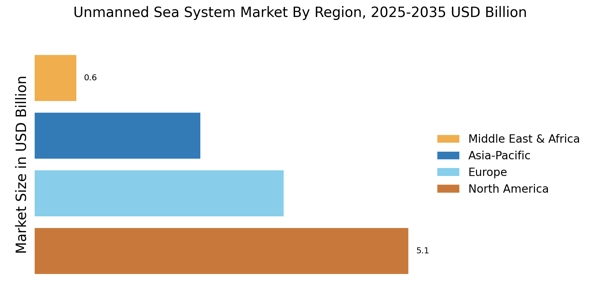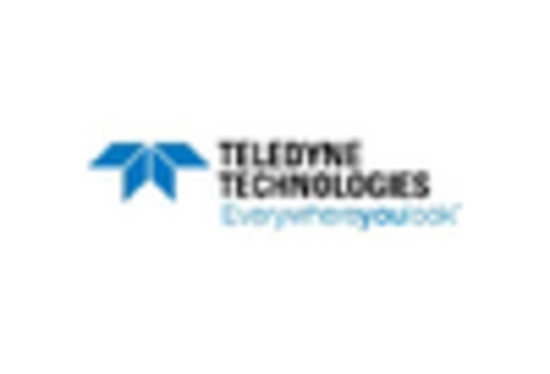Expansion of Commercial Applications
The Unmanned Sea System Market is expanding rapidly due to the increasing adoption of unmanned systems in commercial applications. Industries such as shipping, oil and gas, and fisheries are leveraging unmanned technologies to enhance operational efficiency and reduce costs. For instance, unmanned vessels are being used for routine inspections of offshore oil rigs, significantly lowering the risks associated with manned operations. The commercial sector is projected to account for a substantial share of the unmanned sea systems market, with estimates suggesting it could reach USD 4 billion by 2026. This expansion reflects a broader trend towards automation and digitalization in maritime industries, as companies seek innovative solutions to improve productivity and safety.
Increased Focus on Maritime Security
The Unmanned Sea System Market is significantly influenced by the heightened emphasis on maritime security. Nations are increasingly investing in unmanned systems to monitor and protect their territorial waters against threats such as piracy, smuggling, and illegal fishing. The deployment of unmanned surface vehicles (USVs) and unmanned underwater vehicles (UUVs) has become a strategic priority for naval forces worldwide. For example, the United States Navy has expanded its use of unmanned systems to enhance situational awareness and operational readiness. This trend is expected to drive market growth, with estimates suggesting that the maritime security segment could account for over 30% of the total unmanned sea systems market by 2025. The integration of unmanned systems into national defense strategies underscores their critical role in safeguarding maritime interests.
Growing Demand for Data Collection and Research
The Unmanned Sea System Market is witnessing a surge in demand for data collection and research applications. Unmanned systems are increasingly utilized for oceanographic studies, environmental monitoring, and resource exploration. Their ability to gather high-resolution data over vast areas makes them invaluable for scientific research. For example, unmanned underwater vehicles are employed to study marine ecosystems and assess the impacts of climate change on ocean health. The market for data collection applications is expected to grow substantially, with projections indicating a potential market size of USD 3 billion by 2025. This growth is driven by the need for accurate and timely data to inform policy decisions and support sustainable resource management.
Sustainability Initiatives in Maritime Operations
The Unmanned Sea System Market is increasingly aligned with sustainability initiatives aimed at reducing environmental impact. As concerns over climate change and marine pollution grow, there is a push for greener technologies in maritime operations. Unmanned systems, particularly those powered by renewable energy sources, are being developed to minimize carbon footprints. For instance, solar-powered unmanned vessels are gaining traction for their ability to operate without fossil fuels. This shift towards sustainable practices is not only beneficial for the environment but also aligns with regulatory frameworks that promote eco-friendly operations. Market analysts project that the demand for sustainable unmanned systems could lead to a 20% increase in market size by 2027, as companies seek to comply with environmental regulations and enhance their corporate social responsibility profiles.
Technological Advancements in Unmanned Sea Systems
The Unmanned Sea System Market is experiencing rapid technological advancements that enhance operational capabilities. Innovations in artificial intelligence, machine learning, and sensor technologies are driving the development of more sophisticated unmanned vehicles. These advancements enable real-time data collection and analysis, improving decision-making processes. For instance, the integration of autonomous navigation systems allows unmanned vessels to operate in complex environments with minimal human intervention. According to recent estimates, the market for unmanned maritime systems is projected to reach USD 5 billion by 2026, reflecting a compound annual growth rate of approximately 15%. This growth is indicative of the increasing reliance on unmanned systems for various applications, including surveillance, research, and logistics.


















Leave a Comment